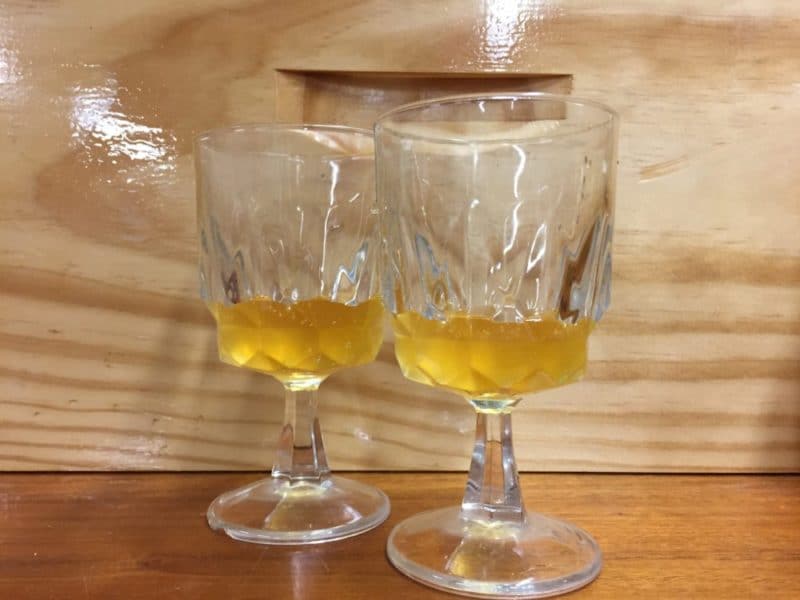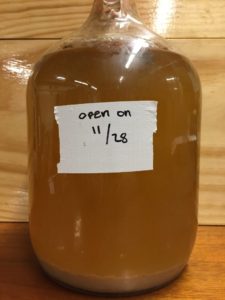Before wine, there was mead. The earliest evidence of mead dates back to 7500 BC in Northern China, where traces of fermented honey were found in pottery. Mead is made by fermenting honey in water and adding various fruits and spices for flavor. This made it the ideal alcoholic beverage for areas where grapes couldn’t grow and be used for wine. For nearly 8,000 years, mead was the drink of choice throughout much of Europe.
History
Ancient civilizations such as the Greeks and Romans drank mead religiously, and philosophers such as Aristotle often wrote of it. In the Anglo-Saxon epic Beowulf, Danish kings and warriors enjoy the fermented treat during feasts, drinking deeply and excessively. However, as wine became more widespread throughout Europe, mead gradually became less popular. In England, beers and ales became more prevalent during the 12th century, eventually replacing mead as the preferred drink. The tradition of mead-making continues today in monasteries. The most famous producer is The Holy Island of Lindisfarne, located in North East England.
What is mead?
Like wines, beers, and ales, there are various flavors and types of mead that can be created. Factors that affect the flavor of the mead include the spices and fruits, fermentation time, source of honey, and any yeast added to facilitate fermentation. The sweetness of the mead is correlated with the strain of yeast used and its alcohol tolerance levels. Yeast that tolerate higher alcohol levels tend to use up more sugar, creating drier mead. Sweet mead can be created using a strain of yeast with a lower alcohol tolerance, leaving behind more sugars. More sugars give it that sweet taste! Another way to create sweet mead is using potassium sorbate. Adding potassium sorbate at the end of the fermentation process allows you to add sugars without the risk of fermentation starting back up. However, you should also add potassium metabisulfate along with the potassium sorbate to prevent other bacteria from forming and changing the taste.
There are numerous recipes for mead that can be found on the internet. Below is orange spiced quick mead that we recently started at The Best Bees Company.
Supplies
1 gallon glass jug
Fermentation lock (or balloons)
3 lb. of honey
1 cup of orange juice
2 dozen raisins (for the yeast)
¼ tsp. cinnamon
¼ tsp. nutmeg
¼ tsp. allspice
1 package brewing yeast
Water
Siphon
Mason jar with lid
Directions
- Sanitize everything the mead will touch. Soak in a solution of 1 tbs bleach per gallon of water, then rinse in water and air dry.
- Prepare yeast. Heat orange juice to 95-100˚F then add yeast and cover the mason jar and shake.
- Leave yeast container loosely capped for 20-30 min; yeast should start foaming.
- Pour fermented honey into the gallon jug. Add warm water to jug so volume of water equals volume of honey. Cap the jug and shake well to mix water and honey.
- Once temperature drops to less than 105˚F in gallon jug, add spices, raisins, and yeast/orange juice mixture. Add cool water until water level is about 1-2” from top (to avoid overflow from fermentation).
- Insert stopper with fermentation lock (or balloon).
- Set jug in a cool, room-temperature area away from direct sunlight.
- After about 6 weeks, siphon the mead into separate containers/bottles of your preference. Try to leave as much sediment behind as possible during the siphoning process.
- Enjoy your fermented treat!
*As the mead ages longer, it will appear more clear/ transparent, and the ABV will increase.
Our recipe is adapted from: http://selfreliantschool.com/how-to-make-quick-mead/
Ben Ruzzo is a first year beekeeper with The Best Bees Company. As a Northeastern University Co-op, Ben works in the field, and in the lab at our affiliated 501(c)3 non-profit.







